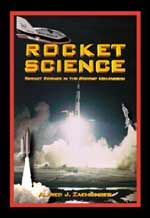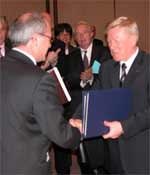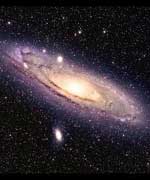Monday, January 17 – Before dawn this morning, try having a look for Mars and red Antares on the rise. The first precise observation of Mars’ position dates back to this day in 272 BC, but was observed by Aristotle as early as 356 BC. So what’s the significance of looking? Translated, Alpha Scorpi – or Antares – means “rival of Mars”. Did you know Mars was originally named Ares? So “Antares” quite literally means “not Mars”. As you look for our ruddy points of light this morning, take hope. Antares will rise four minutes earlier tomorrow morning, and every day afterwards. Being able to sight a “summer star” can only mean winter for the Northern Hemisphere is getting shorter by 240 seconds every day!
While you are out, be sure to keep a watch for the Coma Berenicids meteors. This widely varied stream is still producing around one to two meteors per hour, and they are among the fastest meteors known – reaching speeds of up to 65 kilometers per second!
And since we’re “early to rise”, let’s head for an “early to bed” as we celebrate American scientist, Benjamin Franklin’s 299th birthday with an early evening observation of the seven-day old, first quarter Moon. Tonight’s outstanding feature will be the Alpine Valley. Located tonight near the terminator in the northern lunar hemisphere, this wonderful “gash” very conspicuously cuts across the lunar Alps just west of crater Aristotle. As you view this 180 km long and (at points) less than 1 km wide feature, ask yourself how it was formed. Perhaps an asteroid once sliced its way through the forming region? Even science doesn’t have a perfect answer for this one!
Tuesday, January 18 – Let’s return again to the Moon tonight to explore. The most prominent feature distinguishable in binoculars and small telescopes will be the rather blank looking oval of crater Plato, but the feature we’re really interested in is just south – Mons Pico. Appearing as an almost “star-like” point of light to binoculars, telescopes will enjoy this singular mountain for the long shadow it casts on the barren lunar landscape. No doubt comprised of white rock that has high reflecting power, Mons Pico will appear to look almost like a pyramid alone on the grey sands on Mare Ibrium. With an estimated height of 2400 m, this particular lunar feature will be lost over the next few nights. How long can you follow it?
One hundred years ago today, the United States bought their first airplane from the Wright Brothers – perhaps tonight we’ve found it?
Wednesday, January 19 – Head’s up for the United States and Southern Canada. Tonight the Moon will occult 4.4 magnitude Delta Aries! Timing for these type of events is very important so please visit this IOTA page for precise times and locations. If you have never watched a lunar occultation, I highly recommend it. Even binoculars can reveal the event and there is something very exciting about witnessing a star wink out!
Scottish engineer, James Watt was born on this day in 1736. We know my famous forefather held the patent for improvements on the steam engine, but did you know that James Watt was the first to use a telescope in surveying? Tonight let’s celebrate the date of his birth by surveying one of the most impressive features on the Moon – Clavius. As a huge mountain-walled plain, Clavius will appear near the terminator tonight in the lunar southern hemisphere, rivaled only in sheer size by similar structured Deslandres and Baily. Rising 1646 meters above the surface, the interior slopes gently downward for a distance of almost 24 km and span 225 km. Its crater-strewn walls are over 56 km thick! Clavius is punctuated by many pockmarks and craters, the largest on the southeast wall is named Rutherford. Its twin, Porter, lay to the northeast. Long noted as a “test of optics”, Clavius crater can offer up to thirteen such small craters on a steady night at high power. How many can you see? (If you think that’s tough, see if you can spot the Pleiades only two degrees away unaided!)
Thursday, January 20 – We would like to wish Buzz Aldrin a very happy 75th birthday! For those of us who enjoy studying the lunar surface, we can never look without hearing Aldrin’s description of “Magnificent desolation.” It is this kind of bravery and dedication to exploration that inspired us all! So let’s look tonight…
The ten-day old Moon will offer many features such as the fully disclosed Tycho, the incomparable Copernicus and the fascinating Bulliadus, but tonight we’ll be looking for an asterism – “The Great Wall”. By drawing a mental line from Tycho to Copernicus, extend that line by two-thirds the distance north. It is here that you will discover what looks like huge wall on the lunar surface – and at some 48 km high and 161 km long, that would be a great wall! In fact, it is nothing more than the western portion or the Juras Mountains which surround the lovely Sinus Iridum – but it’s definitely a rather striking feature and well worth the time to look in both binoculars and telescopes. Klare nacht!
Also born on this day in 1573 was Simon Mayr. He also observed the moons of Jupiter at nearly the same time as Galileo. Although Jupiter’s many satellites are known as “galilean moons”, it was Mayr who assigned them the Greek names we still use today. For many of us, Jupiter rises far too late for observation, and is often clouded out in the mornings – but did you know that you can listen to Jupiter as well? Visit with my friends at Radio JOVE for both real-time audio as well as information on how to acquire a Radio JOVE receiver of your own! Enjoy…
Friday, January 21 – How about if we try to ignore the Moon tonight and instead search for Comet C/2004 Q2? Unaided-eye detection will be next to impossible, but we’re in luck as the “Magnificent Machholz” will be only three degrees above Alpha Persei. Making its closest approach to the Sun in just a few days, spotting Comet Machholz’ dust tail with so much moonlight will be a real challenge – but at my last observation the ion tail was so strong it just might show! Having passed closest to the Earth earlier this month, Comet Machholz is delighting viewers with clear skies world-wide. On its way to becoming a circumpolar object, this great comet will make a wonderful sight in binoculars with 1.8 magnitude Mirfak in the same field. If you plan on using a telescope, be sure to take the time to study this giant star as well! As the senior member of the Alpha Persei group, this particular star is around 4000 times more luminous than our own Sun and is about 570 light years away. If you are able to discern the other bright stellar members of this group, make note of their position! They might not be cruising quite so fast as Comet Machholz, but they will have changed positions in the sky by around one degree in say… 90,000 years? Just a cosmic sneeze!
On this day in 1792 , John Couch Adams, the man who predicted the existence of Neptune. was born and he shares the same birthday as Bengt Stromgren, who came into the world in 1908. Stromgren was the developer of the theory of ionization nebulae. Why not recognize his achievements by visiting an H II region tonight that not even the Moon can outdo! Let’s head for the “Great Orion Nebula”… Although a lot of the subtle detail will be lost in the moonlight, to think that we can see such a rare “light” from 1900 light years away is pretty amazing! (And we’ll definitely be back to study.)
Saturday, January 22 – This time of year is best to look for some strange occurrences that are not astronomy-related – but wonderful for SkyWatchers! Thanks to a multitude of high thin clouds and an abundance of ice crystals in our atmosphere, be on the lookout for various forms of atmospheric phenomena. The most common is known as the “sun dog” and will look very much like a mock rainbow that appears in a small portion of the sky near the Sun. Much more dramatic is the “sun pillar”, which will look like a huge column of light towering over the Sun both during rise and set. A lot less common, but certainly inspiring is the “parhelic arc”, which appears as a circular (in whole or part) “rainbow” directly around the Sun. Do these things only happen during the day? No! It is not uncommon on frigid nights to see “light pillars” above distant street lights, or to catch a “moon dog” when conditions are just right. For more information on these fantastic phenomena, as well as some downright awesome photos, please take the time to visit with Atmospheric Optics. It makes the cold months just a little more warm…
If you have a new telescope you’d like to try out and want a lunar feature that’s a bit less obvious, then tonight let’s try for crater contrasts. The Oceanus Procellarum is the vast, grey “sea” that encompasses most of the northwestern portion of the Moon. On the terminator to its southwest edge, (and almost due west geographically) you will see two craters of near identical size and depth, but not identical lighting. The southernmost is Billy – one of the darkest floored areas on the Moon. It will appear to have a bright ring (the crater rim) around it, but the interior is as featureless as a mare! To the north is Hansteen – note how much brighter and more detailed it is. It’s easy to discern that Billy once filled with smooth lava flow, while counterpart Hansteen evolved much differently!
Sunday, January 23 – Tonight the Moon will be at its furthest point from the Earth (apogee), but not far enough to darken skies as its gibbous form appears almost two hours before sunset and reveals Saturn only six degrees away at skydark. Almost an equal distance on the other side of our “near full” Moon are the famous “twins” of Gemini – Castor and Pollux. Aim your telescopes at the northernmost of these stars as we briefly explore Alpha Geminorum!
What we are looking at when we view Castor is six-part star system that is around 45 light years away. In a telescope, only three of these stars are visible. If you look carefully, you will see the primary star is actually a fairly close double, only separated in brightness by about 1 magnitude. Each of these two stars is also a spectroscopic double and their companions orbit within just a few million miles of their primary star in a matter of days. To really understand just how close this system is, imagine our own Sun being twice its size and having a small companion orbiting even closer than Mercury. Somewhere out around Pluto would be an identical sun and companion! Moving elliptically around each other, our pair of doubles takes about 400 years to orbit each other. At closest, we would see a separation of about 1.8 arc seconds, but right now they are about 2.2 arc seconds apart and the gap is gradually widening. In around 50 years from now, this “pair of pairs” will have moved to almost 6.5 arc seconds apart!
If you want an additional challenge, see if you can spot the 9.5 magnitude “orange” C star widely placed southeast of our tight system. It is also a spectroscopic binary that belongs to the same “group”. It’s about two-thirds the size of our own Sun and its identical companion orbits in 24 hours at only about a million and a half miles away. But don’t expect to see them change soon, for it takes this particular pair 10,000 years to orbit 100 AU away the dual primary stars. Perhaps we could find a few “sunny” days there?
And that’s it for now. I sure hope that some of you have had clearer skies than I have! Until next week? Ask for the Moon – but keep reaching for the stars! Wishing you clear skies and light speed… ~Tammy Plotner



